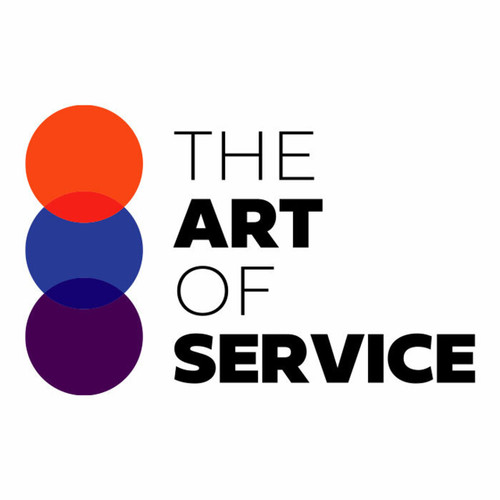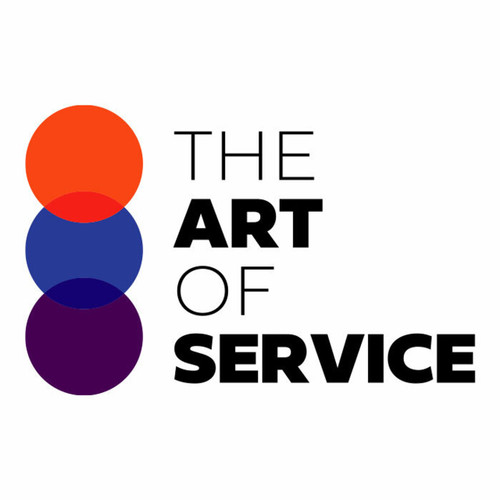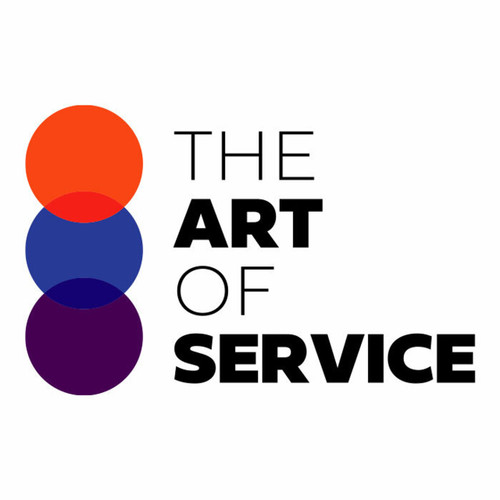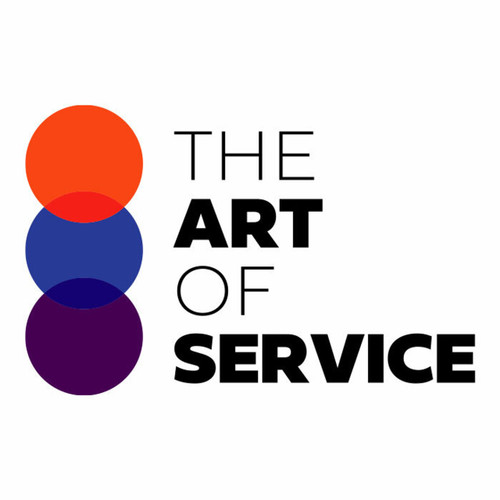Our Disaster Recovery Planning Software and Seven Tiers of Disaster Recovery Knowledge Base is the ultimate solution for all your disaster recovery needs.
Our dataset contains 1562 prioritized requirements, solutions, benefits, and results of disaster recovery planning.
With this comprehensive knowledge base, you will have the most important questions to ask in order to get accurate and urgent results for any scope of disaster.
Why choose our Disaster Recovery Planning Software and Seven Tiers of Disaster Recovery Knowledge Base over competitors and alternatives? Our product is specifically designed for professionals and is easy to use.
You don′t need to be an expert in disaster recovery to benefit from our dataset.
Not only is our product affordable and DIY-friendly, but it also provides detailed specifications and overviews of different disaster recovery solutions.
It covers a wide range of product types and can be used for various scenarios, making it a versatile tool for any business.
The benefits of using our Disaster Recovery Planning Software and Seven Tiers of Disaster Recovery Knowledge Base are endless.
By having access to this extensive dataset, you can save time, money, and resources on creating a disaster recovery plan from scratch.
You can also ensure that your plan is thorough and covers all critical aspects of disaster recovery.
Our product is backed by extensive research on disaster recovery planning and has been used successfully by businesses of all sizes.
From small startups to large corporations, our Disaster Recovery Planning Software and Seven Tiers of Disaster Recovery Knowledge Base has helped businesses prepare for and recover from disasters efficiently and effectively.
Don′t wait until it′s too late.
Protect your business and invest in our Disaster Recovery Planning Software and Seven Tiers of Disaster Recovery Knowledge Base today.
With its cost-effective pricing and detailed pros and cons, you can be confident in your decision to choose our product for your business′s disaster recovery needs.
So what exactly does our product do? It provides you with the tools, resources, and knowledge to create a comprehensive disaster recovery plan tailored to your business′s specific needs.
With our dataset, you will be able to prioritize your requirements, choose the right solutions, and achieve the best results for your business.
Don′t let a disaster catch you off guard.
Be prepared with our Disaster Recovery Planning Software and Seven Tiers of Disaster Recovery Knowledge Base.
Order now and secure the future of your business.
Discover Insights, Make Informed Decisions, and Stay Ahead of the Curve:
Key Features:
Comprehensive set of 1562 prioritized Disaster Recovery Planning Software requirements. - Extensive coverage of 98 Disaster Recovery Planning Software topic scopes.
- In-depth analysis of 98 Disaster Recovery Planning Software step-by-step solutions, benefits, BHAGs.
- Detailed examination of 98 Disaster Recovery Planning Software case studies and use cases.
- Digital download upon purchase.
- Enjoy lifetime document updates included with your purchase.
- Benefit from a fully editable and customizable Excel format.
- Trusted and utilized by over 10,000 organizations.
- Covering: Edge Computing, Plan Distribution, Recovery of Investment, Third Party Management, Data Center Consolidation, Plan Exercise, Plan Maintenance, Data Replication, Service Level Objectives, Internet Of Things, Continuous Data Protection, Hot Site, Configuration Management, Alternate Workspace, Data Backup, Recovery Automation, Cooling Redundancy, Plan Review, Tabletop Exercises, Network Redundancy, Data Mirroring, Plan Training, Software Redundancy, Reporting Tools, Data Center Recovery, Risk Acceptance, Cost Benefit Analysis, Risk Mitigation, Hardware Redundancy, Recovery Strategy, Business Continuity Planning, Value Of Information, Risk Transference, Network Recovery, Regulatory Compliance, Recovery Teams, Mobile Recovery Site, Disaster Recovery As Service, Seven Tiers of Disaster Recovery, Hardware Recovery, Infrastructure Recovery, Testing Tools, Database Recovery, Access Control, Application Recovery, Disaster Recovery Site, Service Level Agreement, Disaster Recovery Documentation, Cold Site, Cloud Backup, Change Management, Power Redundancy, Software Recovery, Warm Site, Monitoring Tools, Hybrid Disaster Recovery, Artificial Intelligence, Cloud Based Disaster Recovery, System Images, Security Audits, Vendor Management, Key Performance Indicators, Total Cost Of Ownership, Work Area Recovery, Supply Chain Continuity, Recovery Time Objective, Department Recovery, Incident Management, Recovery Point Objective, Communication Plan, Maximum Tolerable Period Of Disruption, Disaster Recovery Policy, Plan Testing, Plan Update, Managed Disaster Recovery, Risk Avoidance, IT Disaster Recovery, Intrusion Detection, Emergency Response Plan, Recovery of Losses, Offsite Storage, Business Impact Analysis Tools, Employee Training, Return On Investment, Disaster Recovery Plans, Business Resumption, Vulnerability Scanning, Post Disaster Review, Penetration Testing, Plan Awareness, Risk Assessment Tools, Orchestration Tools, Plan Implementation, Data Privacy, Business Impact Analysis, Simulation Tests, Mutual Aid Agreement, Disaster Recovery Planning Software
Disaster Recovery Planning Software Assessment Dataset - Utilization, Solutions, Advantages, BHAG (Big Hairy Audacious Goal):
Disaster Recovery Planning Software
Disaster Recovery Planning Software helps create plans to restore physical, financial, and digital assets after a disaster. Plans include backup procedures, data recovery, and system restoration for business continuity.
1. Physical Assets: Implement data backup and hardware recovery solutions to restore damaged infrastructure.
- Benefit: Minimizes downtime and data loss.
2. Financial Assets: Utilize financial disaster recovery plans for business continuity.
- Benefit: Ensures financial stability during and after a disaster.
3. Digital Assets: Employ data backup and recovery tools to protect digital assets.
- Benefit: Prevents data loss and ensures data integrity.
CONTROL QUESTION: What are the disaster recovery plans for physical, financial, and digital assets?
Big Hairy Audacious Goal (BHAG) for 10 years from now: A potential BHAG (Big Hairy Audacious Goal) for a disaster recovery planning software company could be:
By 2032, our software will be the industry standard for comprehensive, proactive disaster recovery planning and management, trusted by 90% of Fortune 500 companies for protecting their physical, financial, and digital assets. Our platform will leverage advanced AI and machine learning to provide real-time risk assessment and automated recovery solutions, reducing downtime and minimizing losses in the face of natural and man-made disasters. We will also lead the industry in developing and promoting sustainable and socially responsible disaster recovery practices.
This goal highlights the importance of protecting various types of assets, the use of technology for proactive and real-time risk assessment and recovery, and a commitment to sustainability and social responsibility.
Physical assets would include buildings, equipment, and infrastructure, Financial assets would include investments, assets, and financial information, Digital assets would include data, software, and digital information.
It′s important to note that this is a long-term goal, it′s important to have a clear plan with short-term milestones and KPIs to track the progress. It′s also important to be flexible and adapt the plan as needed based on the company′s growth, technology advancements and the market conditions.
Customer Testimonials:
"This dataset has significantly improved the efficiency of my workflow. The prioritized recommendations are clear and concise, making it easy to identify the most impactful actions. A must-have for analysts!"
"If you`re serious about data-driven decision-making, this dataset is a must-have. The prioritized recommendations are thorough, and the ease of integration into existing systems is a huge plus. Impressed!"
"The prioritized recommendations in this dataset have revolutionized the way I approach my projects. It`s a comprehensive resource that delivers results. I couldn`t be more satisfied!"
Disaster Recovery Planning Software Case Study/Use Case example - How to use:
Case Study: Disaster Recovery Planning for a Mid-Sized Manufacturing CompanySynopsis:
A mid-sized manufacturing company, with $500 million in annual revenue and 2,500 employees, was seeking to develop a comprehensive disaster recovery plan for its physical, financial, and digital assets. The company had previously focused on digital assets but had not developed a comprehensive disaster recovery plan for its physical and financial assets. The company engaged a consulting firm specializing in disaster recovery planning to assist with the development of the plan.
Consulting Methodology:
The consulting firm used a four-phase approach to develop the disaster recovery plan: (1) Assessment, (2) Planning, (3) Implementation, and (4) Testing and Maintenance.
During the Assessment phase, the consulting firm conducted interviews with key stakeholders and analyzed existing plans and procedures. The firm also identified critical assets and conducted a risk assessment to determine potential threats and vulnerabilities.
During the Planning phase, the consulting firm developed a disaster recovery strategy that addressed physical, financial, and digital assets. The strategy included specific recovery time objectives (RTOs) and recovery point objectives (RPOs) for each asset.
During the Implementation phase, the consulting firm worked with the company to implement the disaster recovery plan. This included developing and testing backup and recovery procedures for digital assets, developing contingency plans for physical assets, and implementing financial controls to ensure the continuity of financial operations.
During the Testing and Maintenance phase, the consulting firm conducted regular testing and maintenance of the disaster recovery plan to ensure that it remained effective and up-to-date.
Deliverables:
The deliverables for this project included:
* A comprehensive disaster recovery plan that addressed physical, financial, and digital assets.
* Specific recovery time objectives (RTOs) and recovery point objectives (RPOs) for each asset.
* Backup and recovery procedures for digital assets.
* Contingency plans for physical assets.
* Financial controls to ensure the continuity of financial operations.
* Regular testing and maintenance of the disaster recovery plan.
Implementation Challenges:
The implementation of the disaster recovery plan was not without challenges. The company faced several obstacles, including:
* Resistance from employees who were not familiar with the concepts of disaster recovery planning.
* Limited resources, including budget and staff, to implement the plan.
* Difficulty in coordinating the recovery of physical, financial, and digital assets.
To overcome these challenges, the consulting firm worked closely with the company to:
* Provide training and education to employees to increase awareness and understanding of disaster recovery planning.
* Develop a phased implementation plan that aligned with the company′s resources.
* Establish a cross-functional team to coordinate the recovery of physical, financial, and digital assets.
KPIs:
The key performance indicators (KPIs) for this project included:
* Recovery time: The time it takes to recover critical assets and operations after a disaster.
* Recovery point: The point in time to which data and transactions can be recovered after a disaster.
* Uptime: The percentage of time that critical systems and operations are available.
Other Management Considerations:
Other management considerations for this project included:
* Ensuring that the disaster recovery plan is aligned with the company′s overall business continuity plan.
* Regularly reviewing and updating the disaster recovery plan to ensure that it remains effective and up-to-date.
* Establishing a communication plan to keep employees, customers, and other stakeholders informed during a disaster.
Sources:
* Disaster Recovery Planning: A Consideration for Small and Midsize Businesses. Deloitte Insights, 29 Jan. 2020, www2.deloitte.com/us/en/insights/industry/financial-services/disaster-recovery-planning-for-smaller-firms.html.
* Disaster Recovery Planning: A Step-by-Step Guide. TechRadar, TechRadar, 29 Jan. 2021, www.techradar.com/news/disaster-recovery-planning-a-step-by-step-guide.
* Disaster Recovery Planning for Small Businesses. U.S. Small Business Administration, www.sba.gov/business-guide/manage-your-business/disaster-planning-recovery.
In conclusion, this case study demonstrates the importance of a comprehensive disaster recovery plan for a mid-sized manufacturing company. The four-phase approach used by the consulting firm, which includes assessment, planning, implementation, and testing and maintenance, ensured that the company′s physical, financial, and digital assets were protected. Despite implementation challenges, the deliverables, KPIs, and management considerations provided a solid foundation for the company′s disaster recovery plan. Sources, such as Deloitte Insights and TechRadar, support the importance of a disaster recovery plan for small and midsize businesses.
Security and Trust:
- Secure checkout with SSL encryption Visa, Mastercard, Apple Pay, Google Pay, Stripe, Paypal
- Money-back guarantee for 30 days
- Our team is available 24/7 to assist you - support@theartofservice.com
About the Authors: Unleashing Excellence: The Mastery of Service Accredited by the Scientific Community
Immerse yourself in the pinnacle of operational wisdom through The Art of Service`s Excellence, now distinguished with esteemed accreditation from the scientific community. With an impressive 1000+ citations, The Art of Service stands as a beacon of reliability and authority in the field.Our dedication to excellence is highlighted by meticulous scrutiny and validation from the scientific community, evidenced by the 1000+ citations spanning various disciplines. Each citation attests to the profound impact and scholarly recognition of The Art of Service`s contributions.
Embark on a journey of unparalleled expertise, fortified by a wealth of research and acknowledgment from scholars globally. Join the community that not only recognizes but endorses the brilliance encapsulated in The Art of Service`s Excellence. Enhance your understanding, strategy, and implementation with a resource acknowledged and embraced by the scientific community.
Embrace excellence. Embrace The Art of Service.
Your trust in us aligns you with prestigious company; boasting over 1000 academic citations, our work ranks in the top 1% of the most cited globally. Explore our scholarly contributions at: https://scholar.google.com/scholar?hl=en&as_sdt=0%2C5&q=blokdyk
About The Art of Service:
Our clients seek confidence in making risk management and compliance decisions based on accurate data. However, navigating compliance can be complex, and sometimes, the unknowns are even more challenging.
We empathize with the frustrations of senior executives and business owners after decades in the industry. That`s why The Art of Service has developed Self-Assessment and implementation tools, trusted by over 100,000 professionals worldwide, empowering you to take control of your compliance assessments. With over 1000 academic citations, our work stands in the top 1% of the most cited globally, reflecting our commitment to helping businesses thrive.
Founders:
Gerard Blokdyk
LinkedIn: https://www.linkedin.com/in/gerardblokdijk/
Ivanka Menken
LinkedIn: https://www.linkedin.com/in/ivankamenken/







